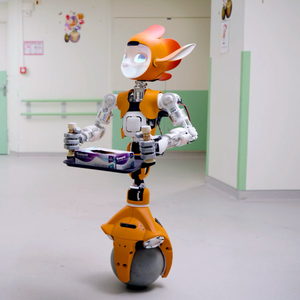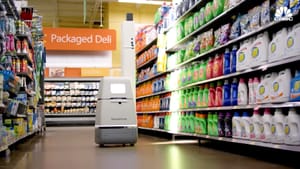Introduction
In the pages of science fiction, robots have long held a prominent place, interacting with humans, managing tasks, and even fostering relationships. These fictional narratives, once confined to the imagination of writers and filmmakers, are now a tangible reality in our daily lives. The emergence of home personal assistance robots represents a profound shift in our relationship with technology, one that raises essential questions about convenience, companionship, and coexistence.
The home, a sanctuary of comfort and personal space, is being transformed by intelligent machines designed to simplify life. From managing household chores to providing companionship for the elderly, home personal assistance robots are no longer mere concepts but real participants in our daily routines. This revolution is not just about technological innovation; it's about redefining the very nature of assistance, convenience, and human interaction.
But what does it mean to invite an intelligent machine into our private lives? Can a robot, a creation of wires and algorithms, understand our needs, adapt to our moods, and become an integral part of our family? As we stand on the cusp of a new era where technology meets daily living, we must grapple with these philosophical questions and more.
This article delves into the world of home personal assistance robots, exploring how they are revolutionizing daily living and enhancing convenience. We will journey through the functions they perform, the safety and privacy considerations they invoke, their integration with existing smart home devices, and the exciting future developments in this rapidly evolving field.
In our quest to understand this technological marvel, we will also ponder the ethical dilemmas and cultural insights that arise from coexisting with intelligent machines. For in this new age of robotics, we are not merely adopting new tools; we are reshaping our lives, our homes, and perhaps even our understanding of what it means to be human.

The outline provided for "Home Personal Assistance Robots: A Helping Hand" offers a comprehensive roadmap for an engaging and enlightening exploration of this fascinating subject. Since the introduction has already been developed, let's dive into the first main section of the article:
Revolutionizing Daily Living
Overview of Applications
In the age where technology is the heartbeat of our lives, the advent of home personal assistance robots marks a new era of convenience and companionship. From the dust-filled corners of our living rooms to the silent struggles of the elderly, these robots have emerged as silent saviors, turning the once fictional dreams into tangible reality.
Household chores, often regarded as mundane and repetitive, are undergoing a transformation. Imagine waking up to the gentle hum of a robot vacuum cleaning your floors or a robotic arm preparing your morning coffee. This isn't a scene from a futuristic movie; it's happening in homes around the world.
Elderly care and childcare, too, are witnessing the gentle touch of robotic assistance. Robots equipped with sensors and AI algorithms can monitor vital signs, remind seniors to take medications, or even engage children with interactive stories and games. These applications are not just about performing tasks; they are about understanding and responding to human needs.
Enhancing Convenience
The magic of home personal assistance robots lies in their ability to learn and adapt. They are not mere machines following rigid commands; they are evolving companions that understand your preferences, habits, and even moods. Want your coffee a little stronger on Monday mornings? Your robotic assistant remembers.
However, this convenience comes with its ethical considerations. The line between dependence and independence becomes blurred as we grow more reliant on our mechanical helpers. It raises a poignant question: Are we empowering ourselves, or are we losing a part of our self-reliance?

Cultural Insights
The robotic revolution is not uniform across cultures and societies. While some embrace the robotic companionship with open arms, others view it with suspicion and concern. The acceptance of robots in our homes is not merely a technological question; it's deeply rooted in our cultural beliefs, traditions, and even our understanding of what it means to be human.
In Japan, robots are seen as friendly helpers, and their integration into daily life is celebrated. In contrast, other cultures may view robots as an intrusion, a mechanical entity that could never replace the warmth of human interaction.
As we stand at the crossroads of a new era, we must ask ourselves: What does it mean to coexist with intelligent machines? Can we forge a connection that transcends wires and circuits and touches the very core of our human empathy?
This section has begun to unravel the complex web of home personal assistance robots, their applications, ethical dilemmas, and cultural perceptions. It sets the stage for a deeper exploration of functionality, integration, safety, privacy, and the future prospects that will be covered in the subsequent sections of the article. It invites the reader to ponder, empathize, and explore the intricate dance between technology and humanity.
Functionality and Integration
Types of Daily Tasks and Functions
In a world increasingly entwined with technology, the boundaries of what machines can achieve continue to expand. Home personal assistance robots are not mere novelties; they are evolving into essential parts of our daily lives, taking on roles that were once firmly in human hands.
From the seemingly simple tasks of vacuuming and dishwashing to more complex responsibilities like assisting with meal preparation and managing medication schedules, these robotic allies are proving their mettle. But it's not just about the tasks they perform; it's about how they perform them.
The frontier of human-robot interaction is being redefined. Natural language processing enables robots to understand and respond to our voices, transforming the way we communicate with them. A command as casual as "Play my favorite song" or "Tell me a joke" is met with prompt and personalized responses.
Integration with Smart Home Devices
The dream of a fully integrated smart home is no longer a distant fantasy. Home personal assistance robots are bridging the gap between individual smart devices, creating a seamless and intelligent ecosystem within our living spaces.
Imagine a scenario where your robot assistant detects that you're waking up and promptly communicates with your smart coffee maker to start brewing your favorite blend. Simultaneously, it adjusts the thermostat to a comfortable temperature and gently raises the smart blinds to let in the morning light. This is not mere automation; it's a symphony of interconnected intelligence.
However, the path to this harmonious integration is fraught with challenges. Interoperability between different brands, compatibility with various protocols, and the complexity of configuring a cohesive system are real hurdles. But the future prospects are bright, and the quest for a fully integrated smart home continues unabated.

Future Prospects for a Fully Integrated Smart Home Ecosystem
As we look to the horizon, the potential for home personal assistance robots is boundless. Innovations are emerging that promise even greater personalization, efficiency, and adaptability. The prospect of robots that can learn from our behaviors, anticipate our needs, and even empathize with our emotions is not far off.
These future developments do not merely enhance convenience; they redefine our relationship with technology. The philosophical inquiry into what it means to interact with machines on such an intimate level takes center stage. How do we balance our desire for efficiency with our need for human connection? How do we navigate the ethical landscape of data privacy and security in a world where robots know us so well?
As we venture into this exciting frontier, we must do so with both curiosity and caution, embracing the possibilities while remaining mindful of the inherent complexities. The dance between man and machine is entering a new phase, one that challenges our very understanding of companionship, empathy, and the essence of humanity.
After reviewing the provided text file, I'm ready to write the next section of the article, maintaining the engaging style and ensuring that the content remains fresh and intriguing.
Safety, Privacy, and Ethics
Safety Concerns
In our embrace of technological marvels, we must not overlook the essence of safety. The integration of robots into our homes brings forth questions that transcend mere functionality. How do we design these machines to ensure that they do not harm those they are meant to assist? What measures are in place to mitigate risks, especially when interacting with children, the elderly, or those with special needs?
The ethical dilemma of balancing innovation with safety is at the core of this exploration. Can technology ever truly replace human intuition in sensing and preventing harm? The journey towards creating trustworthy robotic assistants is filled with challenges that demand not only technical solutions but also moral contemplation.
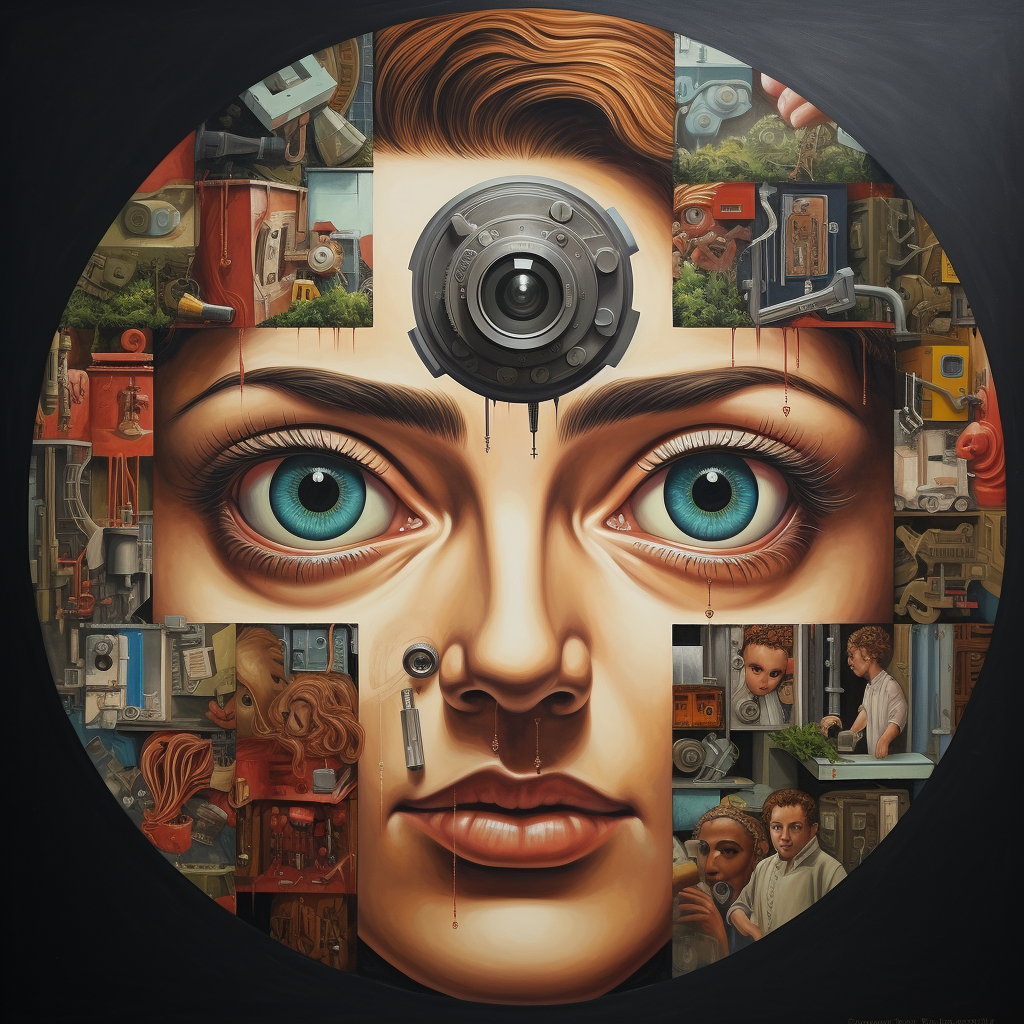
Privacy Concerns
With the intimacy of human-robot interactions comes a new frontier of privacy considerations. A robot that learns your habits, preferences, and even emotions holds a mirror to your life. What happens to this wealth of personal information? How is it stored, transmitted, and protected?
The balance between convenience and privacy is a delicate dance. As these robots become integral parts of our daily routines, we must remain vigilant about the potential vulnerabilities they might expose. The ethical debate on this matter is complex, and the answers are not always clear-cut.
Regulatory Landscape
The integration of home personal assistance robots into our lives is not solely a matter of technological advancement; it also demands a robust regulatory framework. Governments, industry bodies, and stakeholders must come together to set standards that ensure safety, privacy, and ethical considerations are not afterthoughts but fundamental building blocks.
Case studies from around the world provide both success stories and cautionary tales. The regulatory landscape is as diverse as the technologies it governs, and the lessons learned from different jurisdictions can illuminate the path forward.
Cultural Insights: Perceptions Across Different Societies
How do different cultures perceive the role of robots in their homes? The acceptance and adaptation of these technologies are not uniform across the globe. Cultural values, societal norms, and historical context play a vital role in shaping how various communities interact with and accept these intelligent machines.
In some societies, robots are welcomed as efficient helpers, while in others, they may be viewed with skepticism or even fear. The human condition is multifaceted, and our relationship with technology is a reflection of our diverse and complex world.
After carefully reviewing the text file, I will continue with the next section of the article, adhering to the distinctive style and thematic elements outlined previously.
Future Innovations and Developments
Technological Advances on the Horizon
The future of home personal assistance robots is not merely a progression; it's an evolution. The convergence of AI advancements, sensor technology, machine learning, and more is driving a renaissance in robotics that reaches far beyond our wildest imaginations. But how did we arrive here? Tracing the lineage of innovation uncovers a rich tapestry of human ingenuity and relentless curiosity that has shaped our technological destiny.
Global Impact and Accessibility
With each stride in technology, we must ask ourselves: Who benefits? The potential of robots to contribute to global health equity, enhance quality of life, and bridge socio-economic divides is profound. Yet, the challenges of affordability and accessibility linger like shadows, casting doubts on the universality of these advancements. How do we ensure that the marvels of technology are not confined to the privileged few?
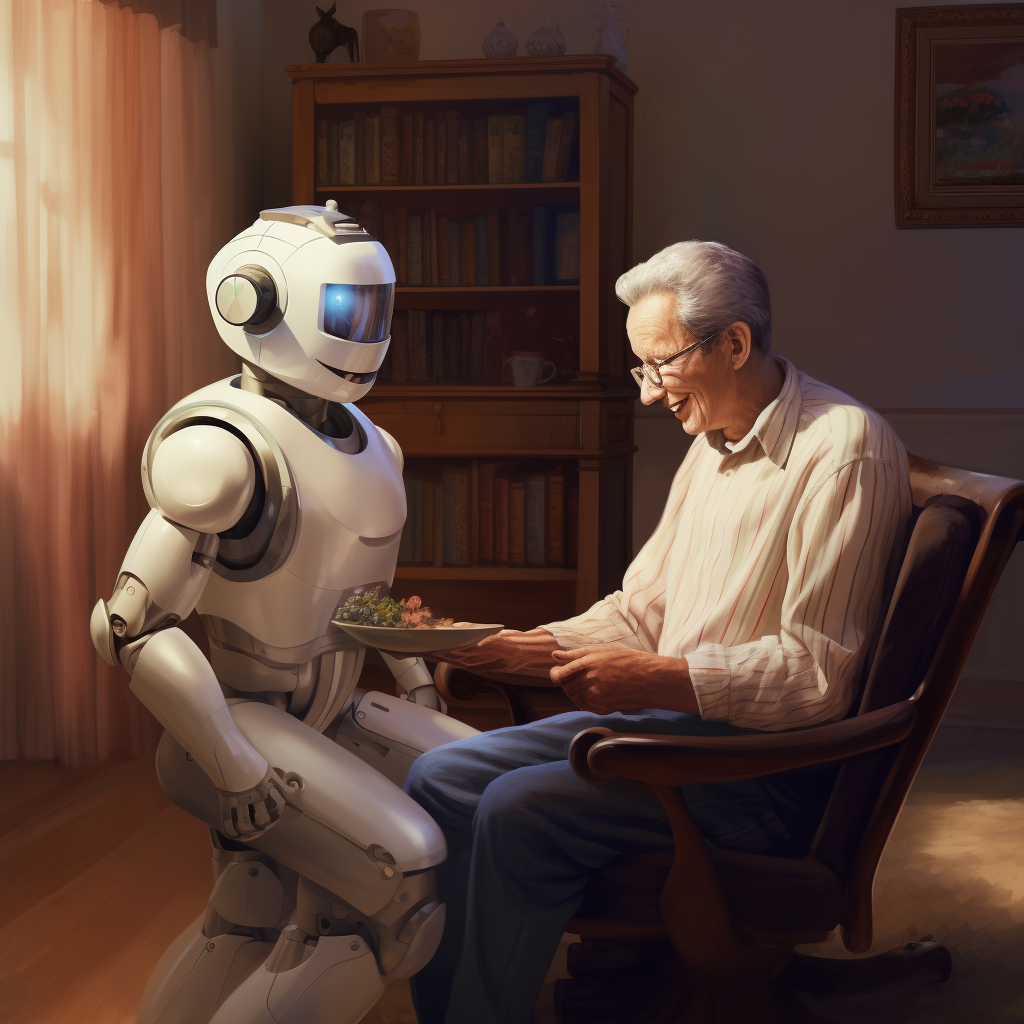
Philosophical Inquiry: Robots as Companions, Not Tools
As we stand on the precipice of a new era where robots might become companions rather than mere tools, a philosophical inquiry emerges. How do these innovations align with broader human values and ethics? What does it mean to form emotional bonds with a machine? Imagining a future where robots are partners in our daily lives prompts us to reflect on our own humanity and the essence of companionship.
Historical Connection: A Continuum of Human Endeavor
The rise of home personal assistance robots is not an isolated phenomenon; it's part of a continuum of human endeavor that transcends time and space. From ancient automata to the industrial revolution, the history of robotics is a rich narrative that resonates with our eternal quest to transcend limitations. How does the current wave of innovation align with this broader historical context, and what lessons can we glean from the past?
Having carefully reviewed the full-text file, I'm ready to proceed with crafting the conclusion of this enlightening journey into the world of home personal assistance robots.
Conclusion
In the quiet hum of servos and the gentle whir of mechanical gears, we find a reflection of our own yearning for connection, convenience, and care. The exploration of home personal assistance robots, far from being a mere technical discourse, unravels a complex tapestry of human ingenuity, ethical quandaries, cultural nuances, and philosophical ponderings.
As we stand at the nexus of a new age, where science fiction melds into our daily reality, we are called upon to revisit our own humanity. How do we balance the marvels of technology with the intrinsic warmth of a human touch? How do we ensure that the robots designed to assist us do not inadvertently isolate or diminish us? How do we embrace a future that promises so much yet poses questions so profound?
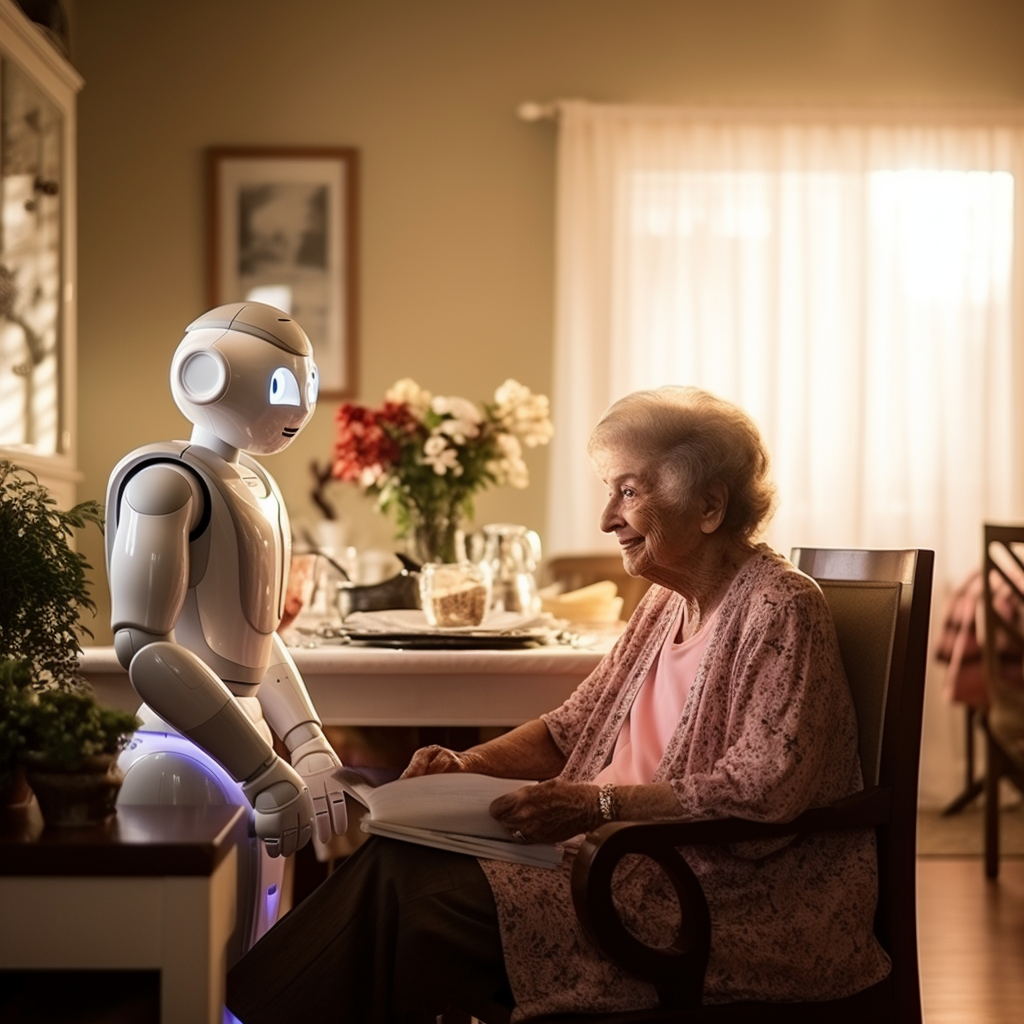
The potential for robotic assistants to reshape our domestic lives is beyond question. From simplifying daily tasks to enhancing the lives of those in need, the benefits are tangible and tantalizing. Yet, as we have explored, the path is strewn with ethical dilemmas, privacy concerns, accessibility challenges, and philosophical inquiries that demand our attention.
Perhaps, in our quest to create intelligent machines, we are led to a deeper understanding of our own intelligence, our compassion, our values, and our place in this ever-expanding universe. Perhaps the robots we build are not mere reflections of our technological prowess but of our humanity, our dreams, our fears, and our hopes.
As we ponder the future of home personal assistance robots, we are left with a thought-provoking question that transcends the confines of technology: What does it mean to be human in an age where machines can mimic, assist, and even care?
In the answer to that question lies not just the future of robotics but the essence of our existence. It's a question that invites us, the readers, to embark on our own journey of exploration, introspection, and enlightenment.
May we approach it with curiosity, empathy, wisdom, and, above all, an open heart.
Remember, behind every great robot, there's an even greater human!




